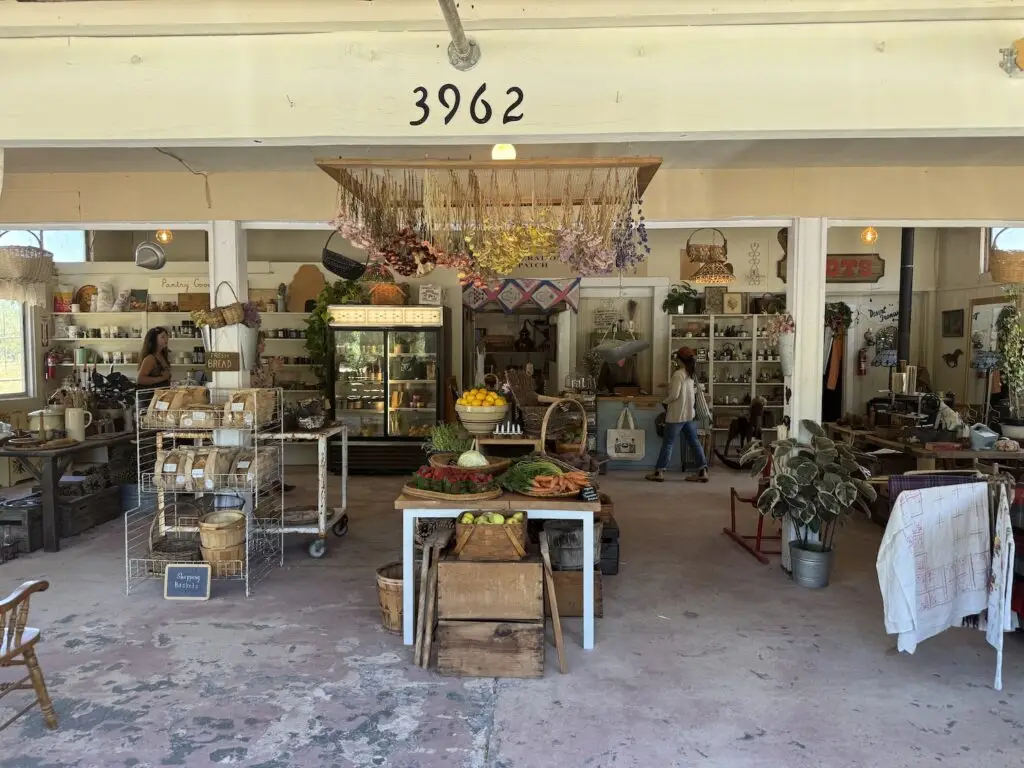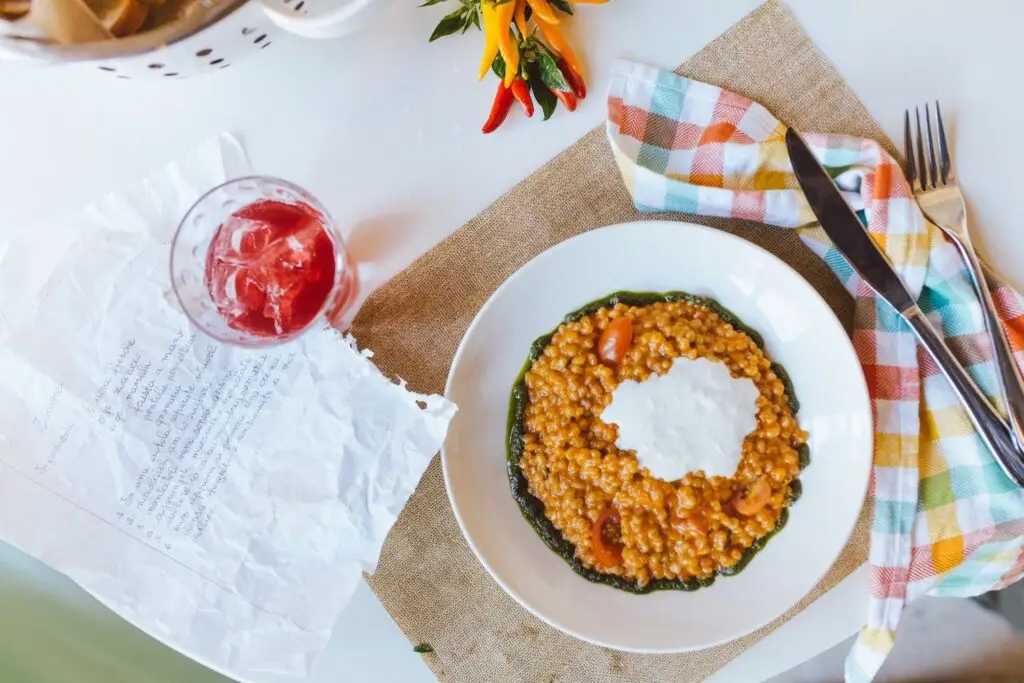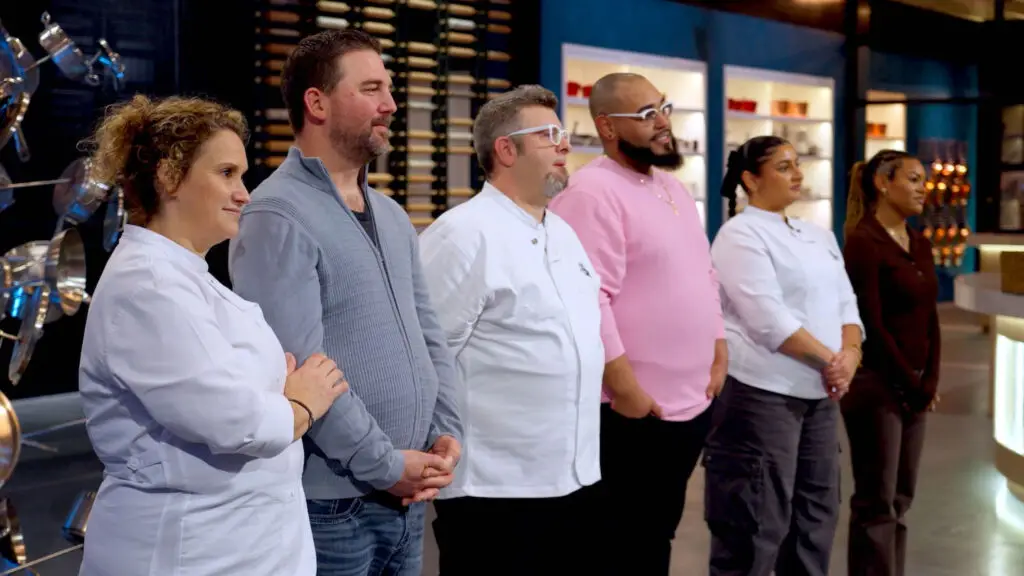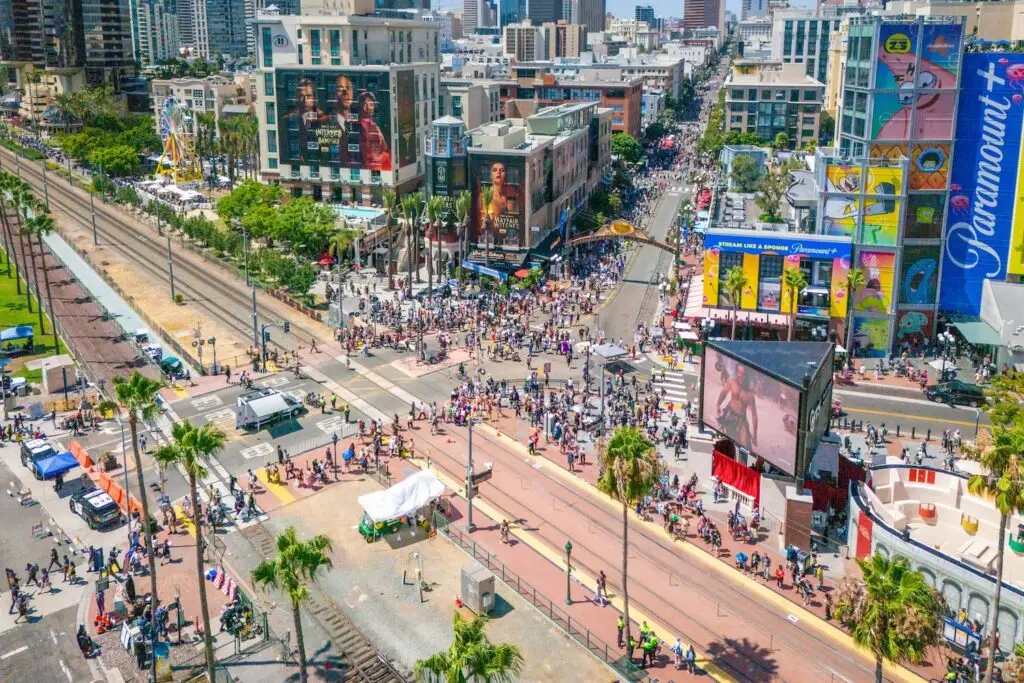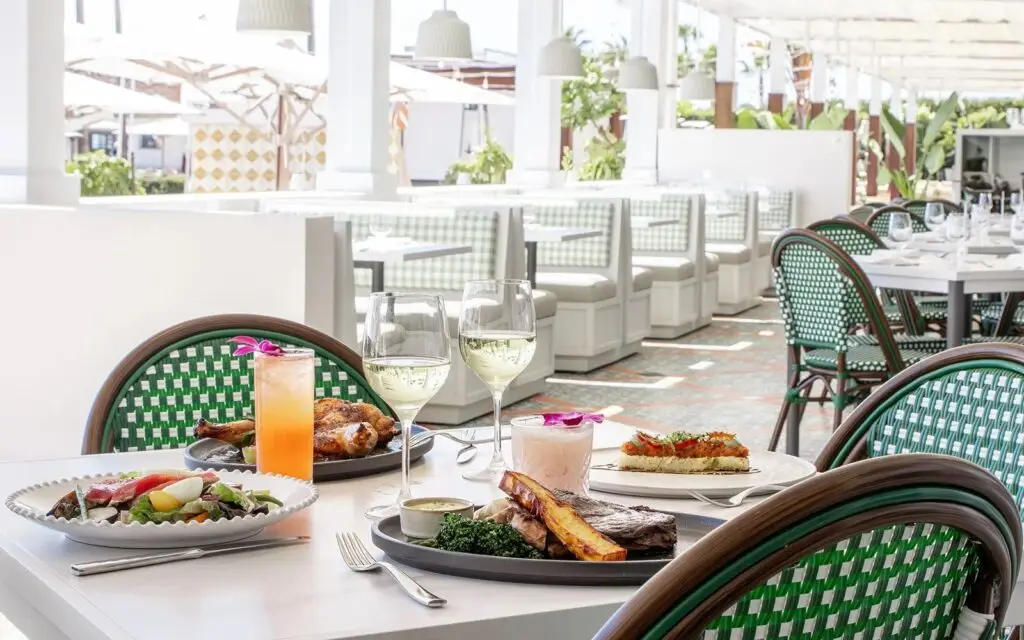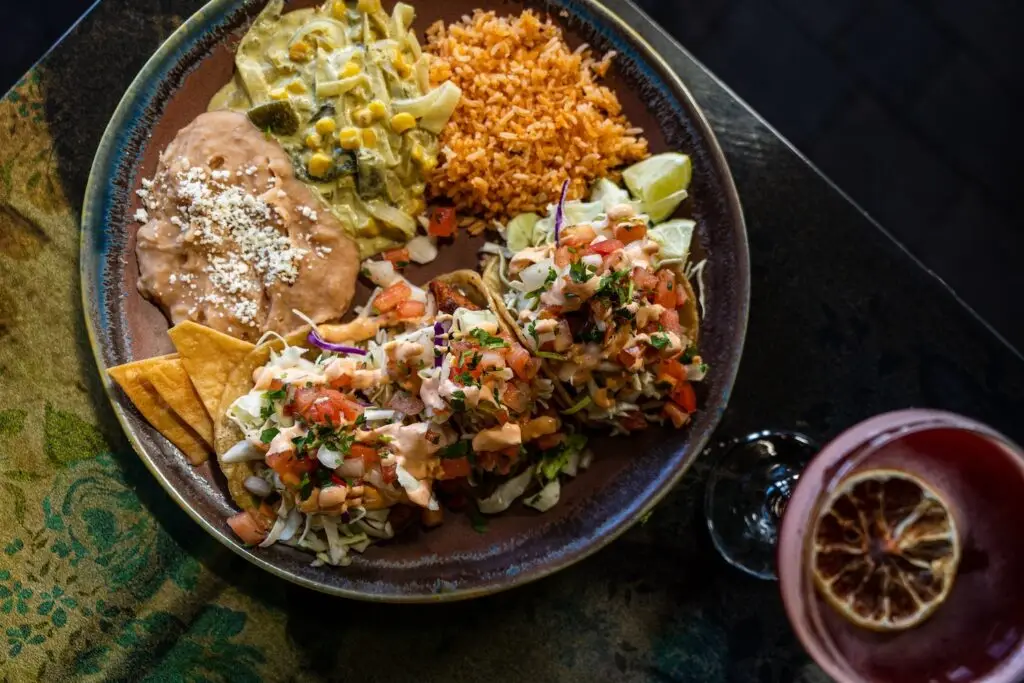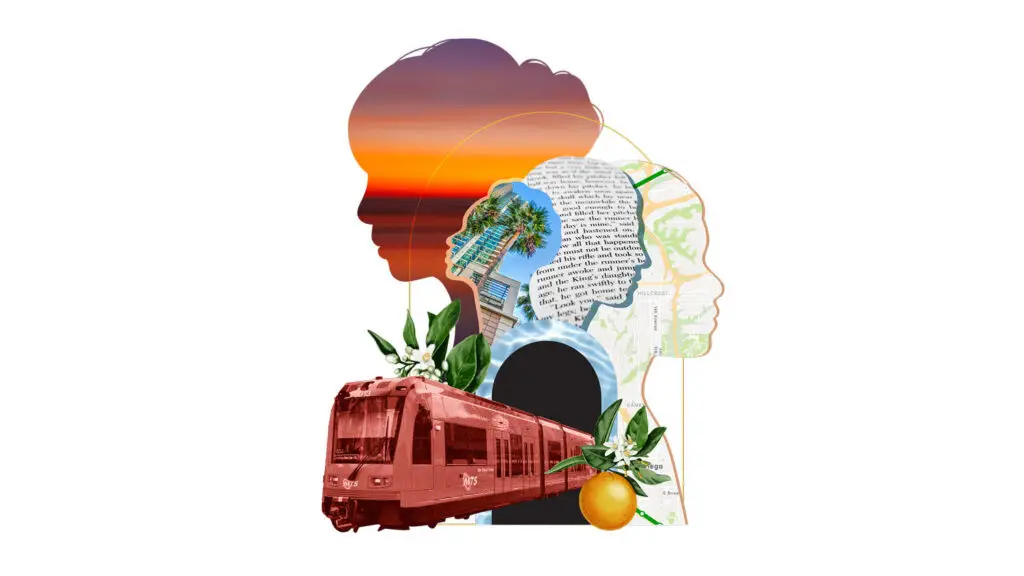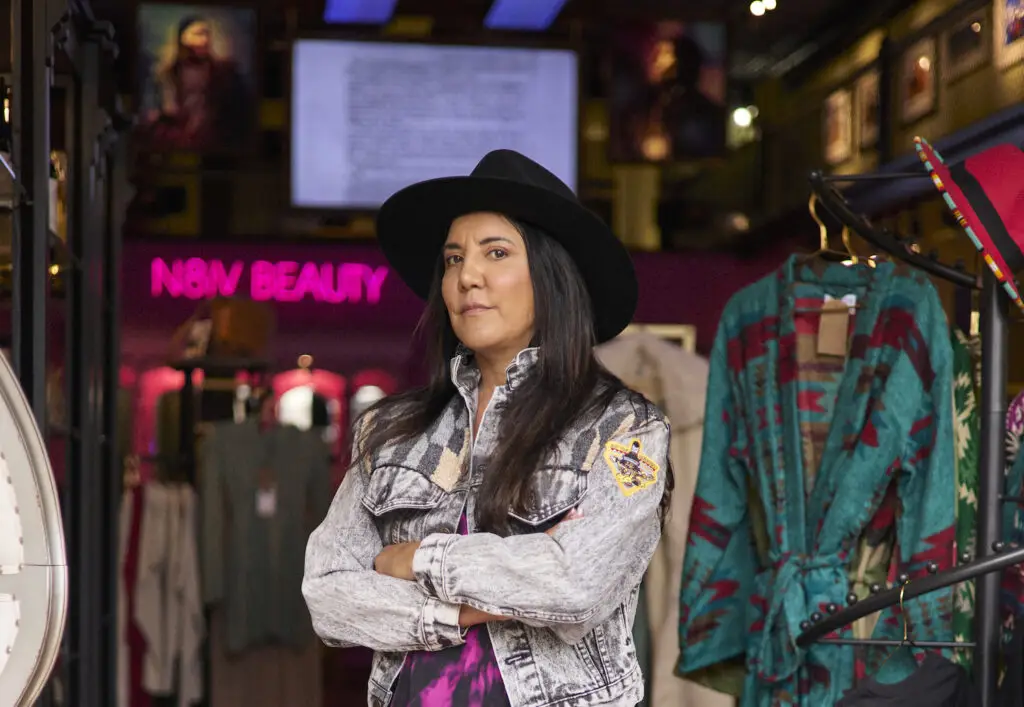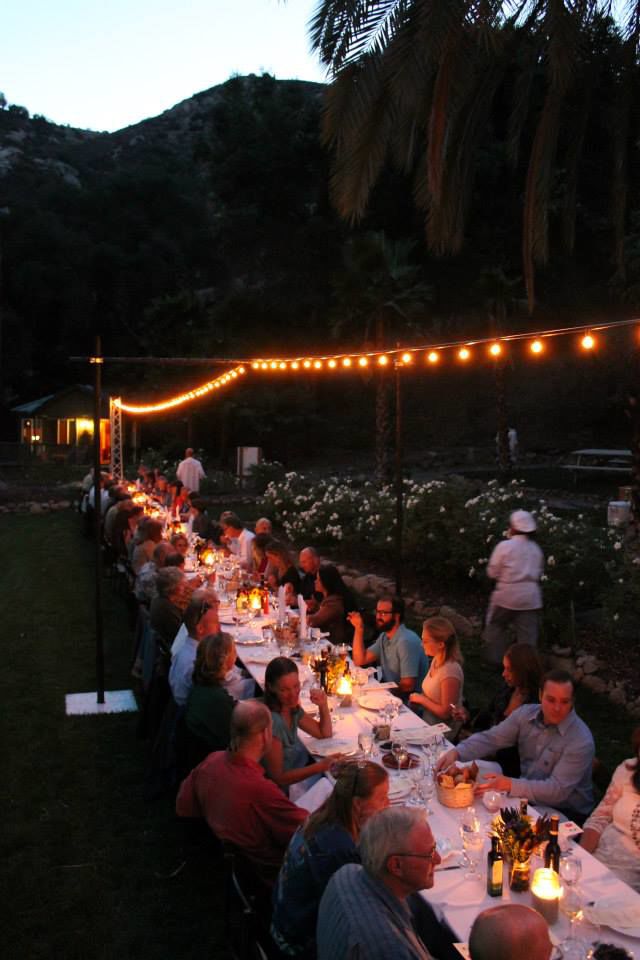One night about a hundred ears ago, this 144-acre nook—East of Escondido, south of cell coverage, behind the rocky hill in a shady, lovely mountain cradle you never knew existed—was host to 3,000 partiers. Ranchers, croppers, workers, folk, all of ‘em.
The inaugural “Feast on the Farm” at The Ranch at Bandy Canyon was an attempt to evoke that agrarian bacchanal. One single table was strung with carnival lights, candles, flowers, wine, water, and 176 diners. Thirty-plus farms donated food, cooked by two of San Diego’s top French chefs—Patrick Ponsaty (Ranch at Bandy Canyon, Bellamy’s) and Vincent Grumel (Vincent’s). The courses—including two full pigs, two veal, oodles of lamb, over 150 pounds of meat and 100 pounds of local cheese—just kept getting passed down the table.
Bandy Canyon is a pretty magical place. That one-story, cellar-like structure with the funky iron chandeliers and light fixtures? Reportedly the first structure by SD’s famous adobe architects, the Weir Brothers. Those bungalows? Newlywed consummation areas. There’s koi in ponds and hawks overhead, a tropical-rancher oasis in the middle of a huge swath of the county that’s mostly sagebrush and crop dust. And “Feast” was one of the best culinary events I’ve been to.
But the cause was even more compelling. “Feast” raised $25,000 for the San Diego Farm Bureau—the organization fighting for the rights of the county’s nearly 6,000 farms, and the farmers who run them. “These people do so much work for all of us farmers and rarely get credit for it,” said Mountain Meadow Mushroom owner, Gary Crouch.
So I called SDFB president Julie Walker about what kind of things keep local farmers up at night, and how you can help if helping is your kind of thing:
What is one of the biggest issues facing local farmers right now?
Water. We just don’t have enough at an affordable price. Availability of water is in jeopardy because of the situation of the delta. The delta system is in jeopardy, the levee system is fragile it needs to be shorn up and replaced. Then you have environmental concerns, which are valid, to protect the endangered species. Between that and the cutbacks in the water supply and the impact of the drought, we’re dealing with cutbacks.
Why should I care?
Agriculture is advocating not just for itself, but for everyone. Ag is serving the public—feeding us and giving us beauty with flowers and decorative plants. In the local economy, agriculture ranks No. 5 in commodity value at about $1.7 Billion. So if we’re in jeopardy, so is the public. You take that $1.7 Billion in general and how it fans over the economy—trucking, boxing, fertilizer, piping, irrigation—you’ve got about $5 Billion. Plus, we supply jobs.
So are we in crisis mode, pre-crisis mode, everyone-stay-calm mode?
It’s a slow, steady death. And as more of us fall out of the business, it’s not like we’ll come back when it starts to rain again.
How much are San Diego farmers paying?
We pay about the highest per unit of water consumption through the entire state. That varies according to commodity and need. And whether or not the commodity is water-thirsty product or water-wise.
How are farmers coping?
We’re more diligent in conserving our water. Within the last seven years, we’ve reduced our consumption about 50 percent. While that sounds good, part of that is because farmers are flat-out shutting off the water in this county. Especially avocado growers. Up along the 15 Freeway corridor, you see a lot of dead avocado groves. Avocados are a water-thirsty crop. About 10,000 acres of avocados have been shut off. About 1 million trees.
Should we stop growing avocados then and just focus on water-wise crops?
My answer is no. But we’re doing things like intensive plantings, where they’re doubling the standard distance avocado trees are grown for one another, and making better use of the water. There are lot of studies being done with trees that don’t use as much water. There’s also been a huge growth in the local wine region. That’s where our commodity grew last year—the total acreage of wine. Some avocado growers have switched to wine because wine grapes are water-wise.
What can I, Joe Blow, do to help?
The most important thing is awareness on the part of the public. The fact that our water is expensive, that we shouldn’t waste it by any means. For water use, agriculture uses only about 9 percent. The public, noncommercial use ranks between 30 and 40 percent. People can look at the 20 Gallon Challenge.
Where do we get our water?
About 20 percent is from the delta, we buy about 30 percent from the Colorado River and Imperial Valley. Only about 7 percent comes from ground water.
How about you give me something positive so it’s not all doom and gloom?
We’re doing our drip irrigation systems, water capture and water recycling. The San Diego Farm Bureau is overseeing a program called EGAP (Escondido Growers for Agricultural Preservation). They’re working with the city of Escondido to develop a system that will hopefully begin in 2015. It uses water which usually just goes off into the ocean. It’s not safe to drink, but it’s perfectly fine for agriculture. That brings the cost down to about a third. There’s also the de-salinization plant that’s beginning its process in Carlsbad.
What would be the REAL game-changer?
I’m hoping for the water bond. It was supposed to go up for a vote the last two voting periods but we took it off the table. The state was in such a budget crisis that we were afraid the public would vote it down because the cost is about $11 Billion. There are two bills going through the assembly and state of California. The one that has the most intrigue is AB 1331 by Anthony Rendon. It takes a more practical approach, bringing the total cost to the public down to $6 Billion. And it addresses water storage. What we can do is pass this bond that includes specific money for water storage. Then we won’t see the water going into the oceans.
Ever taken a firsthand look at our water system?
I went on a tour not too long ago and I was shocked to see the condition of the delta area. This is where most of our water comes in initially. It would take one very well placed earthquake to destroy our entire water delivery system. That’s shocking to me. The emergency system they have in place now, they have a system of riprap (rock, debris and sand) that is sitting, piled, waiting. If the delta is jeopardized and the levee system is broken, that means our water will be contaminated with ocean water—will make it undrinkable. They can shut all water off, including agriculture, just supplying it on an emergency level to the general public for drinking. But in order to shore up that system and bring it on down here they have this sytem of riprap which would make a direct line through the state of California. It would take six months for it to become operational again… Six months.
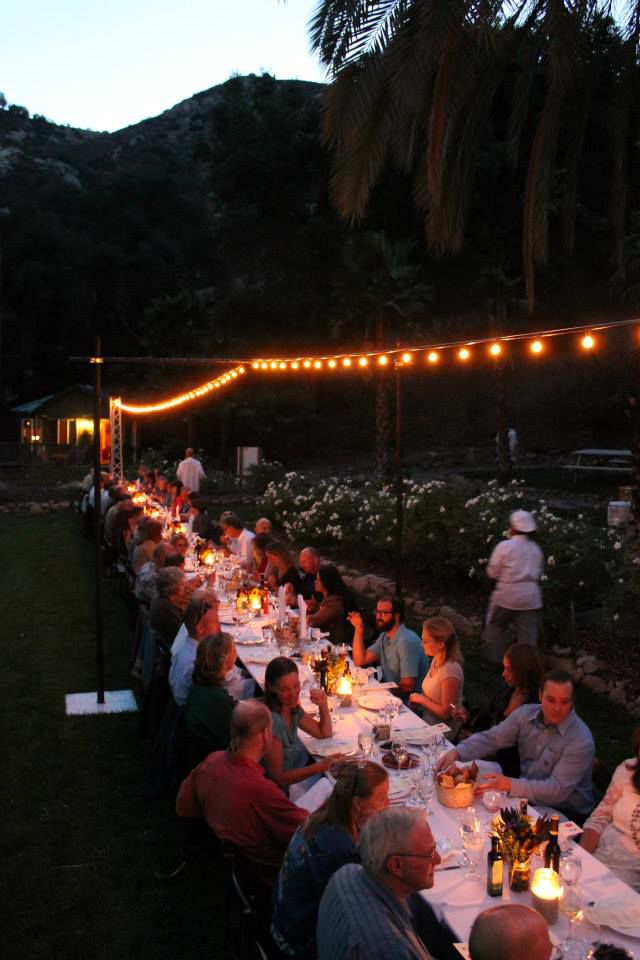
Party at The Farmageddon
PARTNER CONTENT
Edible San Diego
